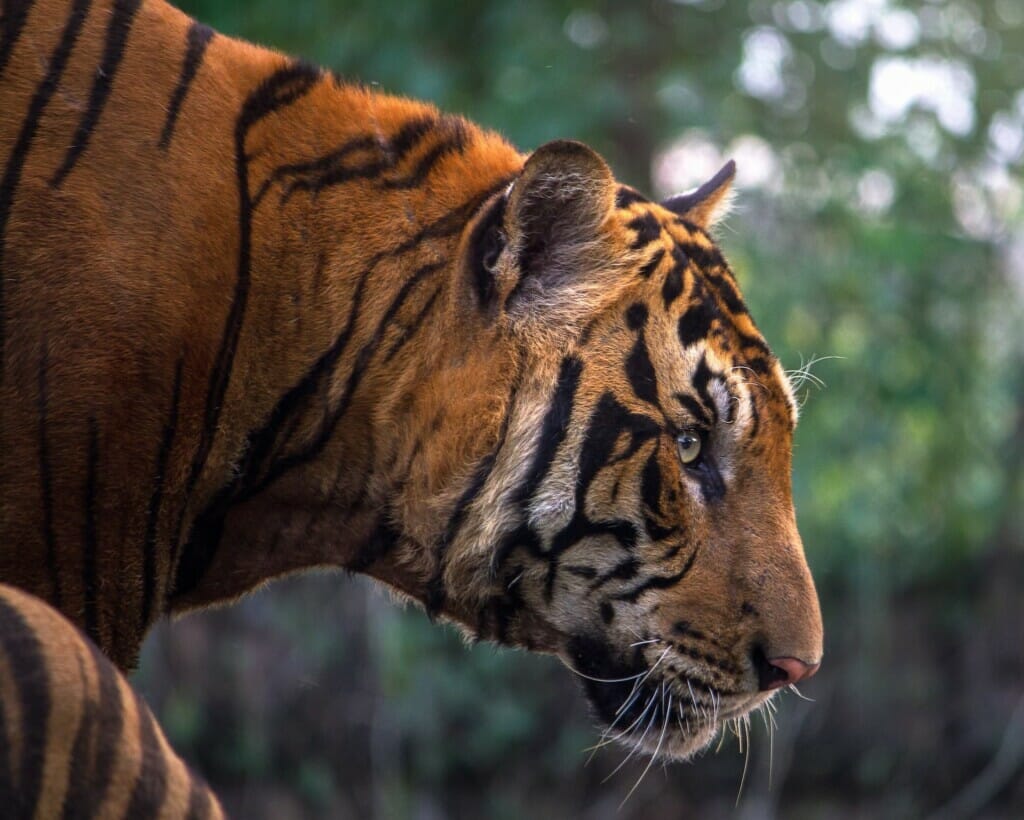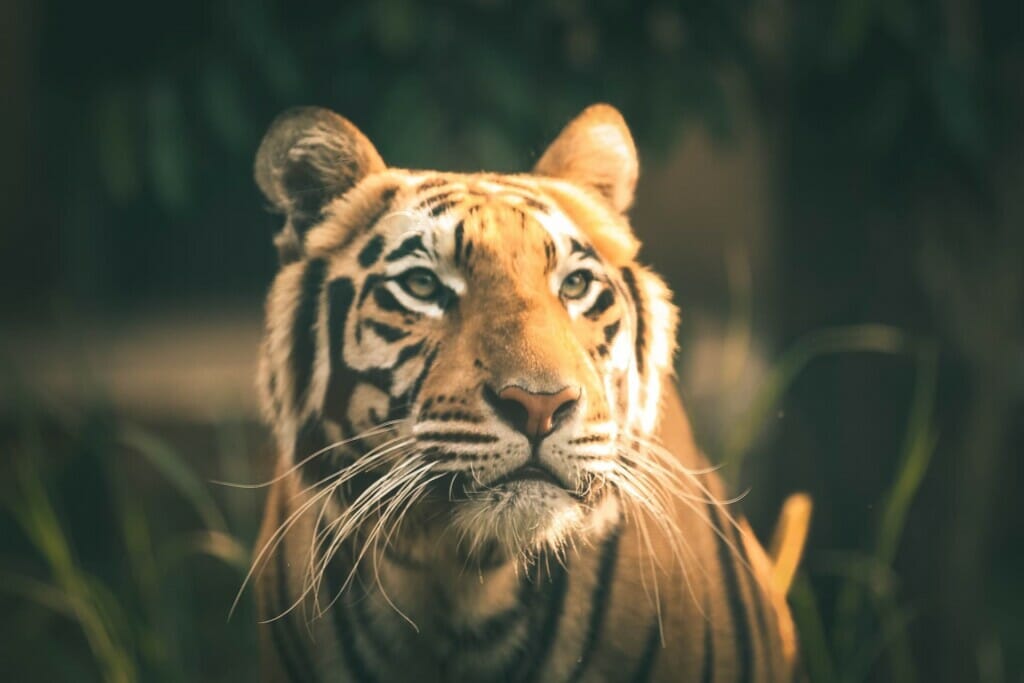The Malayan Tiger (Harimau) is the smallest of the tiger subspecies found on the mainland. In comparison to the Siberian Tiger, the largest of its kind, the Malayan Tiger reaches a maximum length of 10.5 feet and a weight of 660 pounds.
Their population has decreased worldwide from 3,000 in the 1950s to between 250 and 340 now, making them one of the most endangered tiger subspecies in the world. The illegal trade in tiger parts used in traditional medicines is mostly to blame for their decrease. The livestock attacks have also resulted in habitat loss and retaliatory deaths. Although territorial disputes between the tigers sometimes lead to injuries, it is apparent that the biggest predator of the Malayan Tigers is humans.

The Malayan Tigers’ (Harimau) Behaviour
In addition, female tigers use their scent to communicate with other tigers, and male tigers will urinate or scratch the bark of trees to demarcate their territory. The claw marks and urine scent they leave behind are distinctive. If other tigers (Harimau) pick up on these signs, they should avoid the area. To prevent other tigers from entering their territory, the Malayan Tigers spend a lot of time guarding them.
The tigers (Harimau) do not need to camouflage in general. But when a Malayan Tiger is following prey and has to blend into the surroundings for surprise attacks, the striped coat helps as camouflage. Another method the tigers use to evade detection is to stay very still in a patch of tall grass.
The Malayan Tigers’ (Harimau) Appearance
In order to blend in with their surroundings, the Malayan Tigers rely on the stripes on their skin. Their white underfur is easily distinguishable. Each tiger (Harimau) has a distinct pattern of stripes. The back of their ears is white. This helps the cubs follow their mother deep into the forest. Approximately 0.7 to 1.1 m (2.3 to 3.6 ft) of long, slender tail extends from the back of the body. These tigers’ front paws are equipped with sharp claws that help them catch and kill their prey.
Furthermore, the typical Malayan Tiger is between 100 and 120 kilograms in weight and 2.4 meters (8 feet) in length (220 and 246lbs). The male tigers tend to be bulkier than the females.
The Malayan Tigers’ (Harimau) Habitat
Malaysia is home to the endangered Malayan Tiger. In particular, you can find them in Pahang, Kelantan, Perak, and Terengganu.
The Malayan Tigers like swimming in local rivers and streams. Their webbed claws and powerful legs allow them to float effortlessly. They swim to cool off and get to new locations where there might be prey.
Like all cats, the Malayan Tigers (Harimau) have huge, light-receptive eyes that help them see well at night. Moreover, the tiger’s whiskers are equipped with sensory nerves that aid it in navigating the nighttime forest.
The Malayan Tigers’ (Harimau) Diet
Much like other tigers, the Malayan Tigers (Harimau) eat meat. Deer and wild pigs make up the bulk of their diet. Although these are the primary prey, they are not picky eaters and will feed on any animal they can. Insects, fish, tiny mammals, and birds are all included in this category.
The average kill rate for these tigers is about once every seven days. When they have finished eating as much as possible, they will hide their kill so they can return to it the next day.
The Malayan Tigers’ (Harimau) Threats
Humans are the main threat to these tigers. Tigers are the top predators in the animal food chain. Hence they are referred to as the primary predators.
Despite their role as top predators, tigers nonetheless confront numerous challenges to their survival. The tiger’s habitat has been destroyed due to illegal deforestation. Furthermore, they are considered gems in the eyes of illegal poachers. Humans target them for their skins and other parts of their bodies for medicinal use. On top of that, when the tigers (Harimau) kill cattle, farmers often kill them to protect their own. The International Union for the Conservation of Nature (IUCN) also lists this tiger as critically endangered.

Save The Malayan Tiger (Harimau) Campaign
Tigers are the largest cat species but are notoriously difficult to monitor. Like any good predator, they are stealthy, silent, and difficult to spot, thanks to their inky stripes. However, such features have not stopped them from being a target of illegal poaching. That coupled with the saddening effects of illegal logging and unsustainable development, the Malayan Tigers are at risk of going extinct. This is why we must act now to save this species. Efforts are being done to protect these magnificent cats. The Save The Malayan Tiger Campaign by the Regent of Pahang, HRH Tengku Hassanal, strengthens public awareness and monitors the tiger population. In an effort to boost the Malayan Tiger population, zoos from all over the world are taking part in breeding initiatives.